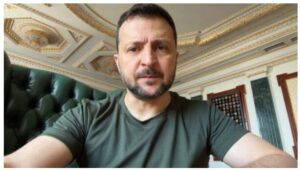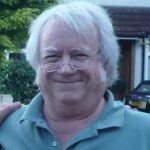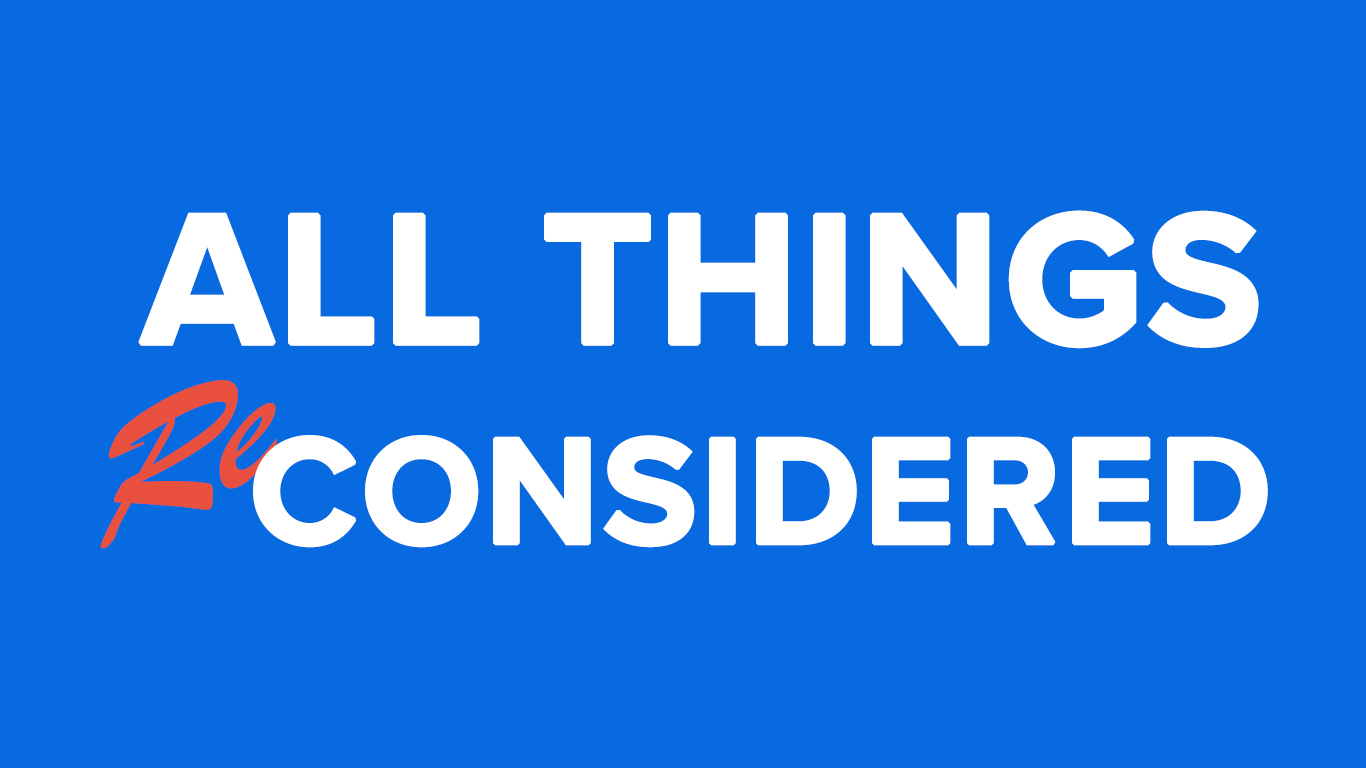by Larry Rivera with Jim Fetzer
“As with Watergate, numerous lawyers were involved with the Warren Commission; in neither case did these lawyers act as lawyers. Rather, they participated in a cover-up and acted as accessories in serious crimes.”–Howard Roffman, Presumed Guilty (1976)
“If it is not an act of God, it is a conspiracy.” Jim Marrs (“The Real Deal”, 5/28/13)
Joseph Ball spanned most of the 20th century as one of the top lawyers in the country. He cut his teeth in the oil and gas industry in the 1920’s and was a member of the firm Ball, Hunt and Hart, from Long Beach and Santa Ana, California.
He also taught criminal law and procedure at the University of Southern California. At one point in his career he was offered, but turned down, a seat on the California Supreme Court.
Over the years, some of his clients included John D. Ehrlichman of Watergate fame, automaker John DeLorean, and Saudi financier Adnan Khashoggi. He died September 21, 2000.[1]
As Assistant Counsel, Joseph Ball was one of the most prolific Warren Commission lawyers, leading and taking more than 100 depositions, most of them in Dallas, Texas.[2]For all of his qualifications, distinctions and immaculate reputation, it seems Mr. Ball was seduced by the dark side – the cabal that assassinated John F. Kennedy November 22, 1963. It is time to put Joseph Ball’s Warren Commission activities in the proper perspective, as they lay bare by the record.
A Problem with the Evidence
One of the most fascinating aspects of the Warren Commission’s inquiry was concealing the fact that only two spent and one unspent shell casings were found at the alleged 6th floor “assassin’s lair”. They were photographed by the DPD in Dallas and by the FBI. Here, for example, is an FBI evidence photo showing two spent casings and one unspent cartridge:
Even more interesting, here is an evidence photo that appeared in Jesse Curry’s JFK ASSASSINATION FILES, which he published after leaving the DPD, where he was Chief of Police during the assassination and its aftermath:

This photo is fascinating not only because it shows two spent cartridge casings (1) and one unspent cartridge (6) but because it also includes the paper bag (7) in which Lee Oswald is alleged to have brought the Mannlicher-Carcano into the TSBD. Anyone with experience with weapons knows that their parts are hard and unforgiving, where had this bag actually been used for that purpose, it would have been torn and oily, not clean and neat as though it had just come from a local “Five & Dime”.
Insofar as the alleged assassin was supposed to have fired three shots at his target, the Warren Commission had to figure out how to obfuscate and work around the evidence that contradicted its position, where Joseph Ball, Esq., would prove his value as an Assistant Counsel. Here is the story of how it was done as another crucial ingredient in the plot to frame an innocent man for the death of the 35th president of the United States.
The “Empty Shell” Game, Part I
Joseph Ball took the testimony of Luke Mooney, the Dallas Police Department Sheriff who first found the shell casings on the sixth floor of the Texas School Book Depository, which supposedly came from Lee Oswald’s Mannlicher-Carcano.[3] In Bloody Treason, Noel Twyman[4] established how Ball orchestrated the scenario where two empty shells and one live round, which had been found by Mooney, and documented by the FBI, was sanitized to officially become three empty shells, presumably left behind by Oswald in the sniper’s nest, and which would later become part of the official record [5].
Exhibit (1): From Mooney’s testimony:
Ball converts two casings and a live round into three “empty shells”
Exhibit (2): From Bloody Treason, Noel Twyman:
“The answer was clear (a) the evidence of three empty cartridge cases was fabricated, and (b) deputy sheriff Luke Mooney was led into testifying that there were three empty cartridges when there were in fact only two. I wondered how an honorable man such as Joseph Ball could have gotten himself involved in such a transparent scheme.” [6]
Exhibit (3): Two spent, one unspent shell from CE 2003:
Exhibit (4): The live round does not come from an M-C:
Exhibit (5): Dougherty’s story comports with two spent shells:
From HAVE WE IGNORED THE KEY WITNESS TO THE DEPOSITORY SHOT OR SHOTS?
By Frank A. Cellura (2000)
Exhibit (6): Focusing on Exhibit 10-14 rather than 10-15:
“One more important note in Joseph Ball’s questioning of deputy sheriff Mooney, he focused on Exhibit 10-14 (CE-510). Why did he choose Exhibit 10-14 instead of Exhibit 10-15 (CE-512), both of which are in the commission Report? The answer could be that Joseph Ball knew that Exhibit 10-14 was authentic and he could not understand Exhibit 10-15, so he avoided attracting attention to it.”[7]
CE716 (WC17H500) also shows the images that Twyman cited (CE510/512), but without the felt tip circles. Indeed, when we enlarge the images we confirm there is a problem with one of the “empty shell casings”, where it appears to be a live round. What Twyman and Cellura seem to have overlooked, however, is that the round is not for a Mannlicher Carcano. As far as calling Ball an “honorable man”, the rest of this article will show Twyman was being generous in his assessment of Ball.
Joseph Ball’s manipulation of Mooney’s testimony was only the beginning of his involvement with the empty shell game. As we move on, the stakes will move higher, and the shell game will rear its ugly head later, when we cover African American witnesses Harold Norman, Junior Jarman and Bonnie Ray Williams.
The “Empty Shell” Game, Part II
The presence of African American witnesses Bonnie Ray Williams, Harold Norman and James Jarman, who were photographed at the fifth floor windows by Tom Dillard right after the shots, has been examined at length  by researchers and investigators.[8]They were brought to Washington on March 24, 1964, and were interviewed by Joseph Ball in the presence of John McCloy, Allen Dulles, Gerald Ford, and Earl Warren himself.[9] This should give the reader an idea of the importance of the testimony of these three gentlemen – and the degree of intimidation they must have been subjected to. Roy Truly accompanied the three to Washington for his first deposition as well.[10] All three of them had been thoroughly prepared and coached four days earlier (Friday, 3/20/64) in Dallas, when they did photo shoots, rehearsals, and re-creations with Joseph Ball on the 5th floor of the TSBD for the Commission.[11]
by researchers and investigators.[8]They were brought to Washington on March 24, 1964, and were interviewed by Joseph Ball in the presence of John McCloy, Allen Dulles, Gerald Ford, and Earl Warren himself.[9] This should give the reader an idea of the importance of the testimony of these three gentlemen – and the degree of intimidation they must have been subjected to. Roy Truly accompanied the three to Washington for his first deposition as well.[10] All three of them had been thoroughly prepared and coached four days earlier (Friday, 3/20/64) in Dallas, when they did photo shoots, rehearsals, and re-creations with Joseph Ball on the 5th floor of the TSBD for the Commission.[11]
 by researchers and investigators.[8]They were brought to Washington on March 24, 1964, and were interviewed by Joseph Ball in the presence of John McCloy, Allen Dulles, Gerald Ford, and Earl Warren himself.[9] This should give the reader an idea of the importance of the testimony of these three gentlemen – and the degree of intimidation they must have been subjected to. Roy Truly accompanied the three to Washington for his first deposition as well.[10] All three of them had been thoroughly prepared and coached four days earlier (Friday, 3/20/64) in Dallas, when they did photo shoots, rehearsals, and re-creations with Joseph Ball on the 5th floor of the TSBD for the Commission.[11]
by researchers and investigators.[8]They were brought to Washington on March 24, 1964, and were interviewed by Joseph Ball in the presence of John McCloy, Allen Dulles, Gerald Ford, and Earl Warren himself.[9] This should give the reader an idea of the importance of the testimony of these three gentlemen – and the degree of intimidation they must have been subjected to. Roy Truly accompanied the three to Washington for his first deposition as well.[10] All three of them had been thoroughly prepared and coached four days earlier (Friday, 3/20/64) in Dallas, when they did photo shoots, rehearsals, and re-creations with Joseph Ball on the 5th floor of the TSBD for the Commission.[11] Of the three, Norman was the only one who said he heard the sound of a rifle bolt being operated in between shots, and the shells falling, after being ejected, onto the wooden floor right above the three men.
Of the three, Norman was the only one who said he heard the sound of a rifle bolt being operated in between shots, and the shells falling, after being ejected, onto the wooden floor right above the three men.On November 26, 1963 Norman was interviewed by the FBI and made no mention about hearing shells and rifle action bolts.
Alas, by December 4th, he was brought in to swear an affidavit where he now stated he heard the above mentioned sounds.[12]This document was used later on to buttress his Secret Service Interview of 12/7/63.
Patricia Lambert wrote about Secret Service Report (SS491) in The Continuing Inquiry10/22/77 Vol 2, No 3 :[13]
Norman’s allegation that he heard the shells hit the floor and the bolt action of the rifle surfaced in toto in SS491. Twelve days after the assassination and eight days after his interview by the FBI, Norman’s startling disclosure made its belated appearance. Norman’s sworn affidavit to the Secret Service states:
“I knew that the shots had come from directly above me, and I could hear the expended cartridges fall to the floor. I could also hear the bolt action of the rifle. I also saw some dust fall from the ceiling of the fifth floor and I felt sure that whoever had fired the shots was directly above me.[7]”
Missing entirely from this new version is the description of Norman putting his head out the window and looking up toward the roof, a gesture which was witnessed by at least four people. Norman permanently eliminated this event from this testimony at this point. Also, the particles of dirt, which he told the FBI fell outside the building and prevented him from seeing anything when he looked up, are changed in this version to “some dust.” This dust fell “from the ceiling” inside the building and the intended implication appears to be that it was dislodged by the shells hitting the floor of the sniper’s nest.
“This then is Norman’s new story. Not only are the sounds of the gunman added for the first time, but one part of his earlier statement to the FBI is excised and another part altered to accommodate the new information. This new story transformed Norman from an inconsequential witness to one of major importance who provided firsthand evidence linking the shots that were fired at 12:30 to the hulls that were found on the sixth floor 40 minutes later. This important information became the focus of his interview three months later before the Warren Commission.”
Jarman and Williams both “corroborated” that Norman said he heard these sounds but they did not hear anything themselves.[14]Once again, an accomplished professor of law and veteran attorney such as Joseph Ball, surely would have known both Jarman’s and William’s statements about Norman telling them about shells hitting the wooden floor above them would have been pure hearsay, and would have been objected by any competent opposing counsel. So why did he pursue this line of questioning and allow it to stand for the record?
Ball shamelessly leads Williams’ hearsay and in the process allows Williams to declare Oswald the shooter! Law students should use this as an example of what NOT to do when taking depositions and testimonies, unless of course, you have an ulterior motive.
The onus of proof here obviously lies with Harold Norman. How could he specifically hear the shell casings hitting the floor, but he nor the others not hear the footsteps of a person running on the wooden floor right above him,[15]and which had empty spaces where flooring was in the process of being laid? Ball tried to sucker him into this and Norman refused to go along:[16]
As pointed out above, the Warren Commission conducted a re-creation, placing Norman on the fifth floor and working a rifle bolt right above him and letting empty shells hit the floor. Obviously, the Warren Commissioners were not convinced with Harold Norman’s testimony,
 and they later made three different trips to Dallas to re-enact the shell game and find out for themselves if it was possible.[17] This illustrates how desperate they were to establish three shots, three shell casings and one patsy in a sling. Regrettably, and with Joseph Ball leading the way, three blue collar African Americans got caught in this intricate web of deception, having to go along with a very vital part of the Warren Commission’s railroad of Lee Oswald.
and they later made three different trips to Dallas to re-enact the shell game and find out for themselves if it was possible.[17] This illustrates how desperate they were to establish three shots, three shell casings and one patsy in a sling. Regrettably, and with Joseph Ball leading the way, three blue collar African Americans got caught in this intricate web of deception, having to go along with a very vital part of the Warren Commission’s railroad of Lee Oswald.We close the shell game with this from Shirley Martin: [18]
The Missing Shell Chicanery
The commission confronted a problem. According to the account they were advancing, a lone gunman fired three shots from the 6th floor of the Texas School Book Depository, scoring two hits and one miss. The first hit allegedly entered the base of the back of JFK’s neck, passed through without encountering any bony structures and exited his throat, then entered the back of Gov. John Connally, shattering a rib, exiting his chest and hitting his right wrist before lodging itself in his right thigh.
They hoped that Arlen Specter’s skillful interrogation with hypothetical questions–“If we assume that the bullet entered here (at the back of the neck) and passed through without hitting any bony structures, would it be consistent with those assumptions to describe the wound here (at the front of his neck) as a wound of exit?”–without noticing the trajectory is not even anatomically possible.[19]
But only two spent shell casings and one unspent cartridge had been found at the alleged scene of the crime. If there were not three spent shell casings, then their case fell apart. They counted on Joseph Ball to perpetrate the charade, first by a series of interrogatories with Deputy Sheriff Luke Mooney, which he performed by citing the shells as “A”, “B”, and “C”, where “A” and “B” were spent and “C” was unspent. But by omitting that crucial point, he concluded by referring to “the empty shells ‘A’, ‘B’, and ‘C’”, instead of referring to “the empty shells ‘A’ and ‘B’ and the unspent shell ‘C’”.
Given that verbal sleight-of-hand, which obfuscated the facts that two spent and one unspent shells had been recorded in evidence photographs, including one by the FBI, and that the one unspent shell was not even a Mannlicher-Carnao bullet, it was not that difficult to arrange confirming evidence from three young black men, whose own testimony was sufficiently malleable or subject to manipulation to make the case the commission wanted to make–regardless of the quantity and quality of the evidence that contradicted it.
Larry Rivera, the son of a career military man who served as CID officer in the Army and a Certified Network Engineer, has made a lifelong study of the JFK assassination. He has given interviews on the assassination to Spanish media and has the most complete dossier on Billy Nolan Lovelady ever done.
James H. Fetzer, a former Marine Corps officer, is McKnight Professor Emeritus at the University of Minnesota Duluth and a columnist for Veterans Today, where his most recent studies of the assassination of JFK can be found. [NOTE: This is one in a series of articles being republished since veterans today.com deleted them in a dispute with its Senior Editor, Gordon Duff, about which I have since written several articles.]
References:
1. http://www.innsofcourt.org/Content/InnContent.aspx?Id=3114
2. JFK Assassination Debate, Mark Lane vs Joseph Ball (12/04/64) 2:04 YouTube. He also wrote Chapter 4 of The Warren Report which happens to be the most important chapter that railroads Lee Oswald.
3. WC3H281
4. Bloody Treason, Noel Twyman pgs 91-97
5. CE 510 & CE 512
6. OpCit pg 94
7. Ibid pg 97
8. The Continuing Inquiry Vol. V #7 2/21/81 pg 3
9. WC3H140
10. HSCA Norman interview by Day also WC3H140
11. CE482, CE490
12. CE493
13. SS491 (CD87 pages 775-797)
14. WC3H161 and WCH198 (Jarman and Williams)
15. The Continuing Inquiry, Vol. 7 (2/21/81), p. 3
16. WC3H191 How could Norman have heard spent shells and rifle bolt action over the report and reverberation of the shots themselves?
17. Warren Commission Report (1964), p. 71
18. Martin letter 1/25/67 (Item 03) From “The Weisberg Collection, Hood College, Frederick, MD,USA”
19. James Fetzer, “Reasoning about Assassinations” (2005-06)
Please follow and like us:















If you need your ex-girlfriend or ex-boyfriend to come crawling back to you on their knees (even if they're dating somebody else now) you have to watch this video
right away…
(VIDEO) Why your ex will NEVER come back…